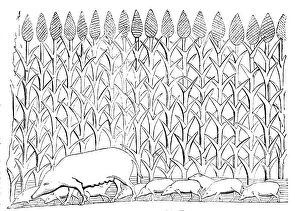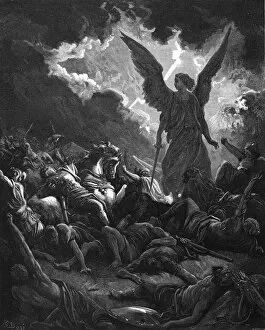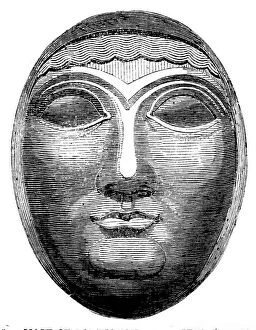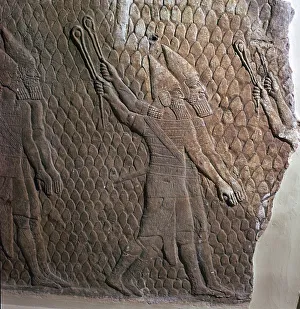King Sennacherib Collection
"King Sennacherib: The Divine Conqueror of Assyria" In the realm of ancient history, King Sennacherib stands as a formidable figure
All Professionally Made to Order for Quick Shipping
"King Sennacherib: The Divine Conqueror of Assyria" In the realm of ancient history, King Sennacherib stands as a formidable figure, renowned for his military prowess and divine encounters. As depicted in Gustave Dore's masterpiece "The Angel of the Lord Vanquishing the Army of Sennacherib, " he faced a celestial intervention by Archangel Gabriel himself. Sennacherib, an instrument of God, ruled over Assyria during the 7th century BC. His reign witnessed both grand architectural achievements and brutal conquests. One such triumph was immortalized in Sir Austen Henry Layard's artwork "Assault on the City of Lachish, " showcasing his army's relentless assault on enemy strongholds. Amongst these victories, perhaps none is more legendary than the smiting of Sennacherib's camp by Archangel Gabriel. This event symbolizes divine retribution against those who dared challenge God's chosen people. It serves as a testament to both Sennacherib's audacity and his ultimate downfall. The ruins that remain today bear witness to this once-mighty empire. The Palace of Kouyunjik, restored after its discovery by Layard, offers glimpses into the opulence that surrounded King Sennacherib. Stone panels from northern Iraq provide insight into Neo-Assyrian artistry and culture during his rule. Yet amidst these remnants lies tragedy too - sunken Assyrian sculptures at Bavian remind us how time can erode even the most enduring legacies. Ruined aqueducts with cuneiform inscriptions in Jerwan stand as silent witnesses to past engineering marvels now lost to antiquity. However, through modern reconstructions like that portrayed in "Reconstruction of the north-eastern facade of Sennacheribs palace (Kouyunjik), " we catch fleeting glimpses into this forgotten world—a world where winged bulls guarded the gates and corbelled arches adorned majestic structures.
















